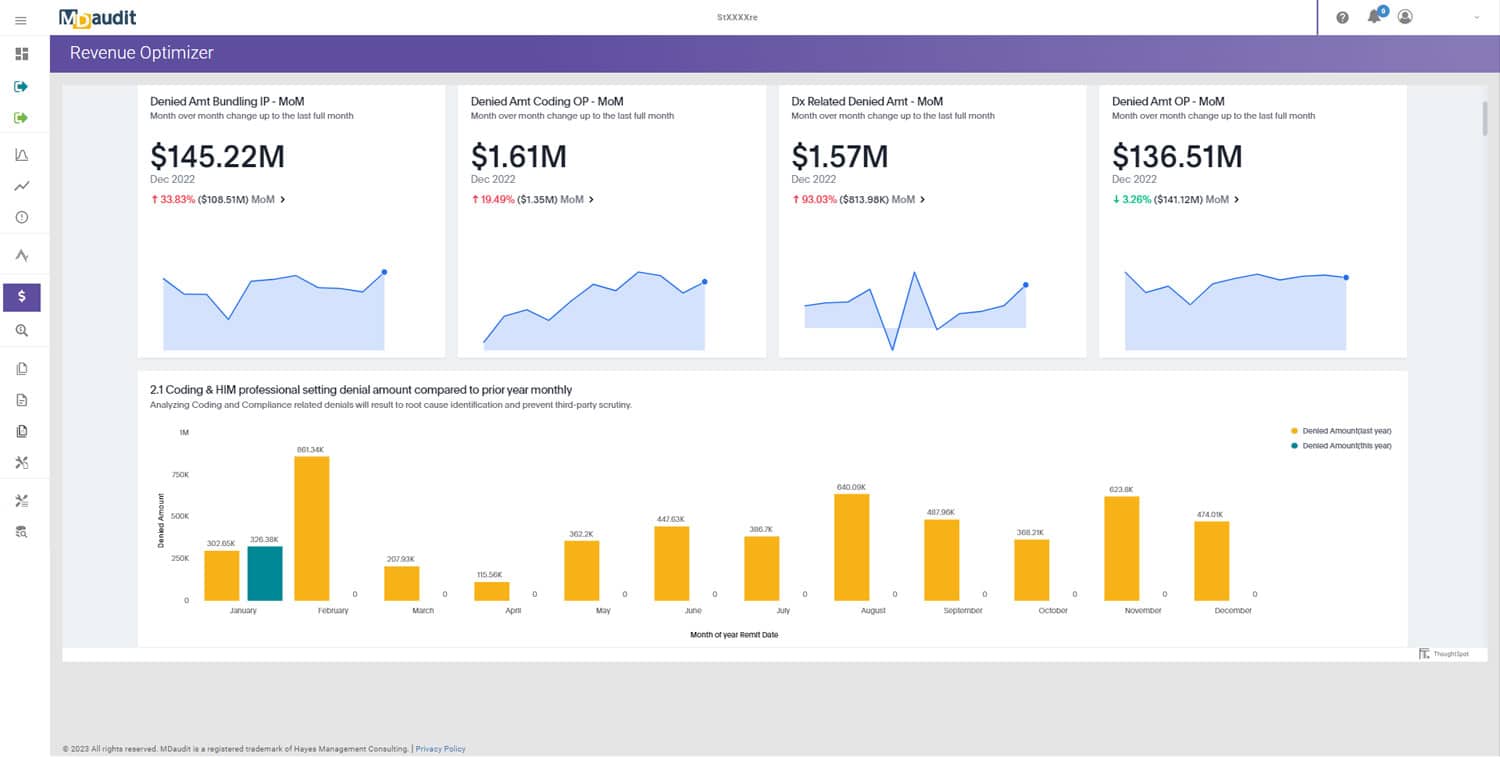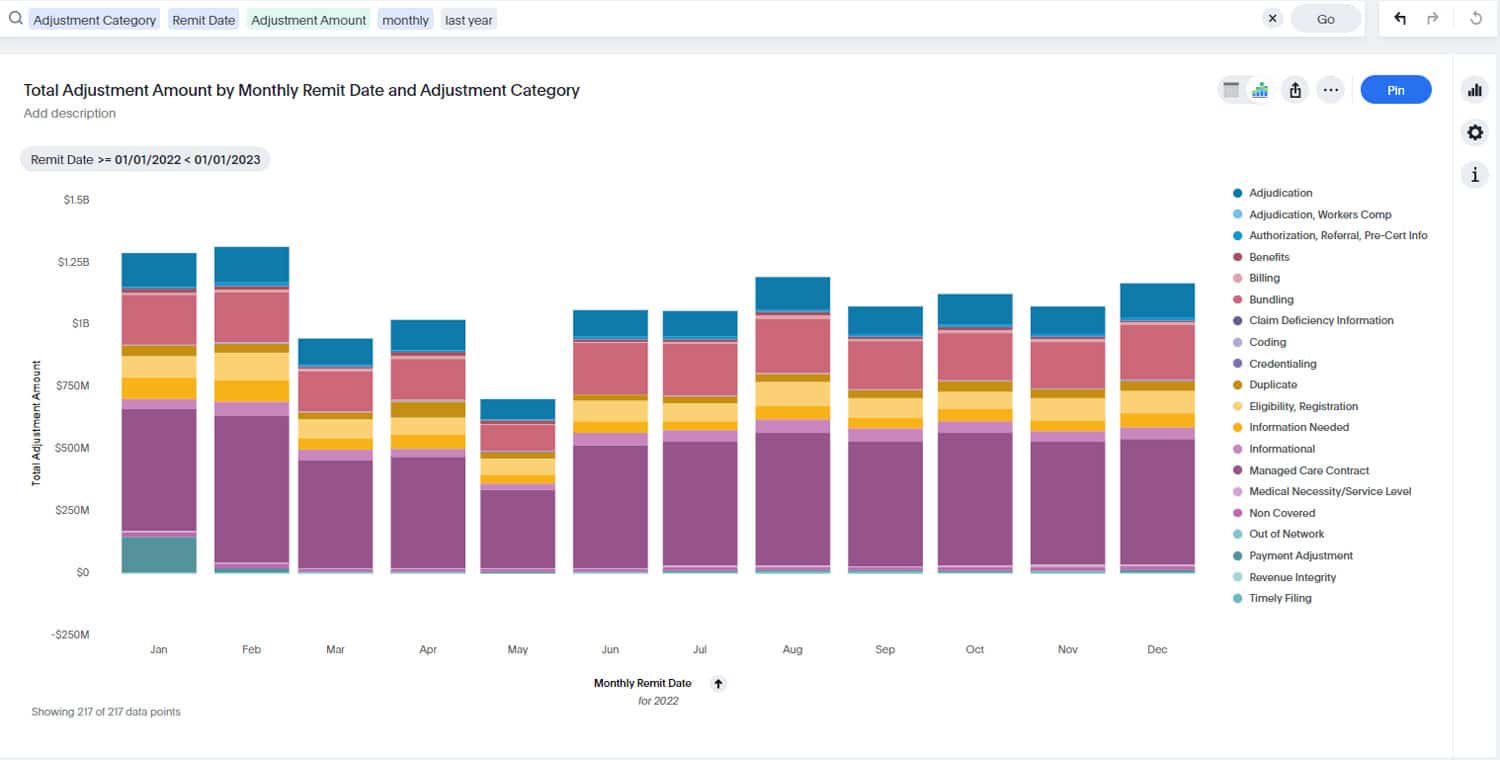Healthcare revenue cycle teams are facing a constant flood of information. Reports, work queues, and email alerts continually flag billing risks and audit findings, making it difficult to separate urgent issues from background noise. Signals are necessary, but signals alone don’t move denials off the ledger. Action does. At MDaudit, we focus on the crucial “last mile” of the process—turning post-audit insights into timely, trackable, and repeatable follow-ups that resolve the root cause and prevent recurrence.
We operationalize denial follow-up by embedding automation into every step of the process,turning audit findings into structured workflows that drive timely action, accountability, and measurable results. We also share practical playbooks for billing compliance, revenue integrity, and HIM/coding teams, around how our platform’s AI and closed-loop workflows can make the work lighter and the outcomes better.
Why post-audit follow-ups stall
Most organizations already generate alerts: a payer starts downgrading a DRG, a payer’s policy changes, or an internal audit flags documentation risk in a high-volume service line. The problem is not visibility; it’s orchestration. Without automation, teams must pull files, assign owners, draft education, track due dates, and push status updates—often across multiple systems. As days pass, staff re-work grows, appeals windows close, and denials shift from “avoidable” to “write-off.”
We built our platform to break that cycle. Our Revenue Integrity Suite creates a closed-loop feedback process that connects insights with action and outcomes. It centralizes denials prevention, embeds audit results directly into workflows, and makes follow-ups a structured, automated part of daily operations instead of an ad-hoc scramble.
A blueprint for “alerts-to-action”
Turning alerts into action consistently requires five capabilities that work together:
- Detect: Identify prospective risk and emerging denial patterns before claim adjudication. Our Denials Predictor applies clinical and financial surveillance to pre-payment charges to flag hot spots and explain why a claim is likely to be denied and how to fix it.
- Triage: Translate a finding into a clear, prioritized queue with business rules that consider payer, dollar value, service line, denial reason category, and aging. The goal is to route the right work to the right person at the right time.
- Act: Trigger templated tasks, documentation requests, and education pathways for coders, providers, or revenue cycle staff. For complex or external reviews, our Payer Audit Workflow streamlines third-party audit requests and creates the evidence trail you need.
- Learn: Feed outcomes back into analytics so the system becomes smarter. With Revenue Optimizer, teams quantify root causes, measure first-pass yield, and ensure changes are working across payers and locations.
- Scale with AI: Use responsible AI to accelerate insight discovery and reduce manual analysis. Our approach to AI at MDaudit keeps people squarely in the loop while boosting productivity, revenue capture, and risk mitigation.
When these capabilities are integrated, post-audit follow-ups stop being a chase and start being a managed process with predictable outcomes.
What “automation” looks like in practice
Automation should remove clicks, not control. In our platform, teams design follow-up playbooks that fit their governance model and operating cadence. A typical post-audit automation might include:
- Rules-driven routing. After an audit identifies an under-documentation pattern in orthopedic procedures, findings route to the HIM lead for that specialty. Cases with an expected impact above a threshold automatically escalate to revenue integrity.
- Pre-built task templates. Templates define owner, due date logic, data attachments (records, code sets, payer policy excerpts), and completion criteria. That consistency reduces hand-offs and speeds up resolution.
- Embedded education. If a coder trend is detected, the follow-up can include links to internal SOPs and a request for targeted education. Our HIM and coding customers use Navigating complex denial management workflows and 6 claim denial reports for revenue integrity teams as frameworks for the curriculum and KPI tracking.
- External audit handling. For payer-initiated reviews, the same findings can spawn an external packet through Payer Audit Workflow, ensuring document retrieval, case assembly, and response deadlines are all tracked in one place.
- Outcome feedback. Once the work completes, results flow into Revenue Optimizer so teams can see the downstream effect on denial volume, overturn rates, and days in A/R.
The result is a calm, repeatable cadence: findings become tasks, tasks become outcomes, and outcomes become intelligence.
Designing intelligent routing rules
Routing is the hinge that turns alerts into action. The more intentional the rules, the fewer bottlenecks you’ll see. We recommend defining routing criteria in four layers:
- Financial impact. Dollar value, margin, and likelihood to overturn. High-impact, high-probability items jump to the front of the queue.
- Clinical and coding complexity. DRG, CC/MCC presence, modifiers, and documentation dependencies.
- Payer behavior. Historical denial rates, policy changes, and appeal timelines by payer and plan.
- Operational capacity. Available staff, specialty expertise, and current queue aging.
These parameters are straightforward to implement because your analytics already surface them. Leverage the reports outlined in 6 claim denial reports for revenue integrity teams to set baselines and revisit thresholds quarterly. When policies shift (e.g., new medical necessity criteria), update the rule once and let automation carry it through the workflow.
Closing the loop with education and prevention
A follow-up that fixes a single claim but doesn’t prevent the next denial is only half successful. Our customers get sustained value by treating each follow-up as an opportunity to improve upstream processes:
- Provider and coder coaching. Use audit evidence to drive targeted education. HIM leaders can reference the concepts in Navigating complex denial management workflows to focus on documentation patterns that drive denials.
- Policy and template updates. Incorporate new payer rules into order sets, templates, and coding guidelines. Our Revenue Integrity Suite helps teams standardize these updates and measure their impact.
- Prospective audits. For patterns with high recurrence, shift to a prospective review model. Our article on Proactive billing compliance audits illustrates how to catch issues earlier, reducing rework for everyone.
Where AI accelerates follow-ups—safely
We believe AI should compress time-to-insight without diluting human oversight. In denials follow-ups, that means using AI to summarize evidence, surface likely root causes, and recommend next steps, then enabling the expert to review and approve. With AI-powered technology and our human-in-the-loop approach described in Effective AI in healthcare RCM requires humans in the loop, teams move faster from finding to resolution while experts stay in control.
For example, when an audit flags frequent medical necessity denials for a drug administration protocol, AI can cluster similar cases, highlight the documentation elements that correlate with overturns, and draft a follow-up plan that includes education for specific providers. Your expert validates, the workflow triggers, and the system monitors outcomes.
Role-based playbooks
Different teams own different parts of the follow-up. We’ve designed workflows to meet each team where they work, while maintaining cross-functional visibility.
Billing compliance
Billing compliance teams are the stewards of audit quality and corrective action. They use internal audit workflows to validate documentation, coding, and billing, then ensure findings convert into timely fixes. Our guidance in Top 5 ways audit workflow automation improves compliance efficiency reflects what we see every day: automation reduces cycle time and helps teams focus on true risk. For a deeper look at internal audit processes, see our page on internal audit workflows.
The billing compliance perspective is also shaped by the needs of the broader organization. See how we support the function on our page for auditing and billing compliance.
Revenue integrity & revenue cycle
Revenue integrity teams translate audit findings into bottom-line results. They use Revenue Optimizer to quantify denial drivers and forecast impact, while Denials Predictor helps prevent issues pre-payment. For a broader overview of how we bring insights, action, and outcomes together, visit the Revenue Integrity Suite.
HIM & coding
HIM and coding teams are central to sustainable prevention. They own documentation quality, code assignment, and rebuttal processes. Our page for HIM & coding outlines how to monitor coding risks, detect anomalies, and run coder audits with automated workflows. When follow-ups indicate education needs, coders can act quickly because all the context and communication is in one system.
Integrating external audits into the same “alerts-to-action” flow
Payer audits create intense, time-bound follow-ups that compete with day-to-day work. Instead of managing them in a separate tool or spreadsheet, we ingest them into the same automated framework. With Payer Audit Workflow, teams standardize intake, document retrieval, packet assembly, and response tracking. When a payer trend emerges, those insights feed back into internal audit plans, prospective reviews, and denial prevention efforts. For additional context and best practices, see our article on insights into managing external audits with efficiency and transparency.
Metrics that matter
Automation is only as good as the outcomes it produces. We encourage organizations to align their dashboards around a concise set of metrics that span detection, action, and prevention:
- Time to follow-up creation: Mean/minutes from audit closure to task issuance.
- First-touch completion rate: Percentage of follow-ups resolved within the initial SLA.
- Appeal overturn rate: For external audits, the rate of favorable determinations.
- Denials prevented: Reduction in predicted high-impact denials in the next cycle.
- Education effectiveness: Change in error rates for the targeted cohort after training.
- Financial outcomes: Net cash recovered and protected, by payer and service line.
Our platform’s analytics and the Revenue Optimizer help teams attribute improvements precisely and sustain them over time. For organizational context, see our overview of defining revenue integrity.
A day-in-the-life: from alert to resolved
Consider a composite example based on common workflows we see across large health systems:
- Alert: Denials Predictor flags a spike in medical necessity risk for infusion services across two facilities, tied to missing diagnosis specificity.
- Triage: A rule routes high-dollar encounters to revenue integrity and the rest to HIM leads at each location. Cases with payer X get a shorter SLA due to a 14-day appeal window.
- Action: Automation creates structured tasks with attachments: flagged encounters, payer policy excerpts, and relevant documentation checklists.
- Education: HIM schedules a 20-minute virtual in-service for providers who share the pattern, adding a quick-reference coders’ note in the EHR order set.
- External audit alignment: At the same time, two records for the same service appear in a payer audit request. Workflow assembles packets, and the team responds ahead of the deadline with complete documentation.
- Outcome: Within three weeks, predicted high-impact denials for infusion services drop by 37%, appeal success reaches 62% for the external cases, and days in A/R for the service line improve by three days.
- Learn: Revenue Optimizer confirms sustained reduction the following month; the rule and education template are rolled out system-wide.
Every step is grounded in automation and visibility, so the team can focus on clinical and financial judgment instead of chasing paperwork.
Governance and change management
Automation succeeds when governance is clear and adoption is simple. We encourage teams to formalize:
- Ownership: Who writes and maintains routing rules, templates, and SLAs; who approves changes.
- Service levels: Target times for creating, starting, and completing follow-ups by risk tier and payer.
- Escalation paths: Auto-escalation logic for aging tasks and for high-risk categories.
- Documentation standards: Required attachments and notes to close a task; how education is logged.
- Review cadence: Monthly or quarterly check-ins to refine rules using analytics from Revenue Optimizer.
For leaders building or maturing their function, our guidance on building a fully functional revenue integrity team can help frame roles, skills, and collaboration models.
Implementation playbook
Organizations often ask where to start. We recommend a four-phase rollout that builds momentum quickly while setting a durable foundation.
Phase 1: Focused pilot
Pick one high-impact denial category (e.g., medical necessity for cardiology diagnostics) and one or two payers. Configure detection, routing, and follow-up templates. Define a narrow SLA. Use the reports outlined in 6 claim denial reports for revenue integrity teams to set baselines and measure lift after four weeks.
Phase 2: Expand scope and automate education
Add adjacent denial categories and pull HIM education into the workflow. Borrow elements from 8 denial mitigation strategies to design a sustainable prevention plan that includes documentation templates and provider engagement.
Phase 3: Integrate external audits
Use Payer Audit Workflow to standardize intake and responses. Connect trends from external requests back to internal audits and prospective reviews described in Proactive billing compliance audits.
Phase 4: Institutionalize and scale with AI
Formalize governance and use AI to accelerate summarization and triage. Our approach to AI at MDaudit and our broader AI-powered technology ensure that automation remains transparent, secure, and human-guided as adoption grows.
Security and trust by design
Healthcare data deserves the highest standard of protection. Our platform is built to keep sensitive information secure while enabling collaboration across teams. For details about our approach, visit our page on data security.
Frequently asked questions from the field
How do we avoid overwhelming staff with more tasks?
Start small, route only what matters, and keep templates tight. Automation should shrink noise, not add it. Focus on a small set of high-impact rules and expand only when you have capacity and proven ROI.
Can we use the system if our audit program is still maturing?
Yes. Our platform supports teams at every stage. If you’re building your program, the guidance in Top 5 ways audit workflow automation improves compliance efficiency and Proactive billing compliance audits can help you establish a balanced prospective/retrospective approach that feeds directly into prevention and faster, more predictable cash collections.
What about mixed operating models across facilities?
We support centralized, decentralized, and hybrid models. Rules can be scoped by facility, specialty, payer, or user group, so each location can operate according to its needs while sharing best practices through common templates and analytics.
How do we keep up with payer rule changes?
Automate monitoring and periodic rule reviews. When a policy changes, update the routing and education templates once and let automation propagate those changes. Use the frameworks in Understanding claim denials and effective routing strategies to keep roles and responsibilities clear.
Can we quantify the value of automation?
Yes. The combination of Revenue Optimizer and the operational metrics above allows you to attribute dollars protected and recovered by payer, service line, and facility—so you can demonstrate value to finance leadership and reinvest in the program.
Getting started
If you are ready to turn denial alerts into action, see how our workflows, analytics, and AI create a single system of action for audit findings and denial prevention. Request a discovery session on our demo request page or reach out through contact us. We look forward to partnering with you to maximize first-pass yield, shorten days in A/R, and build a culture where alerts always lead to action.








